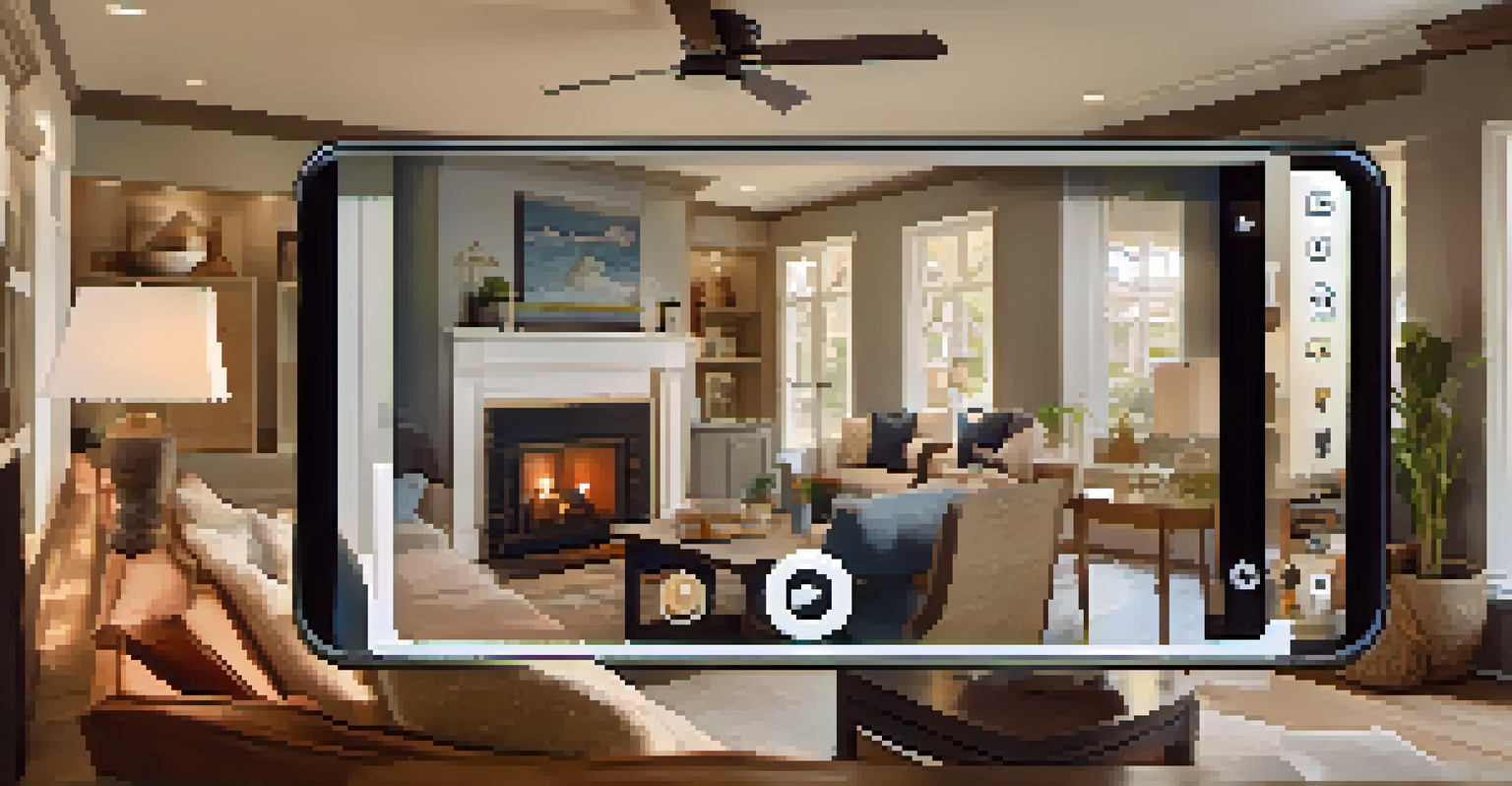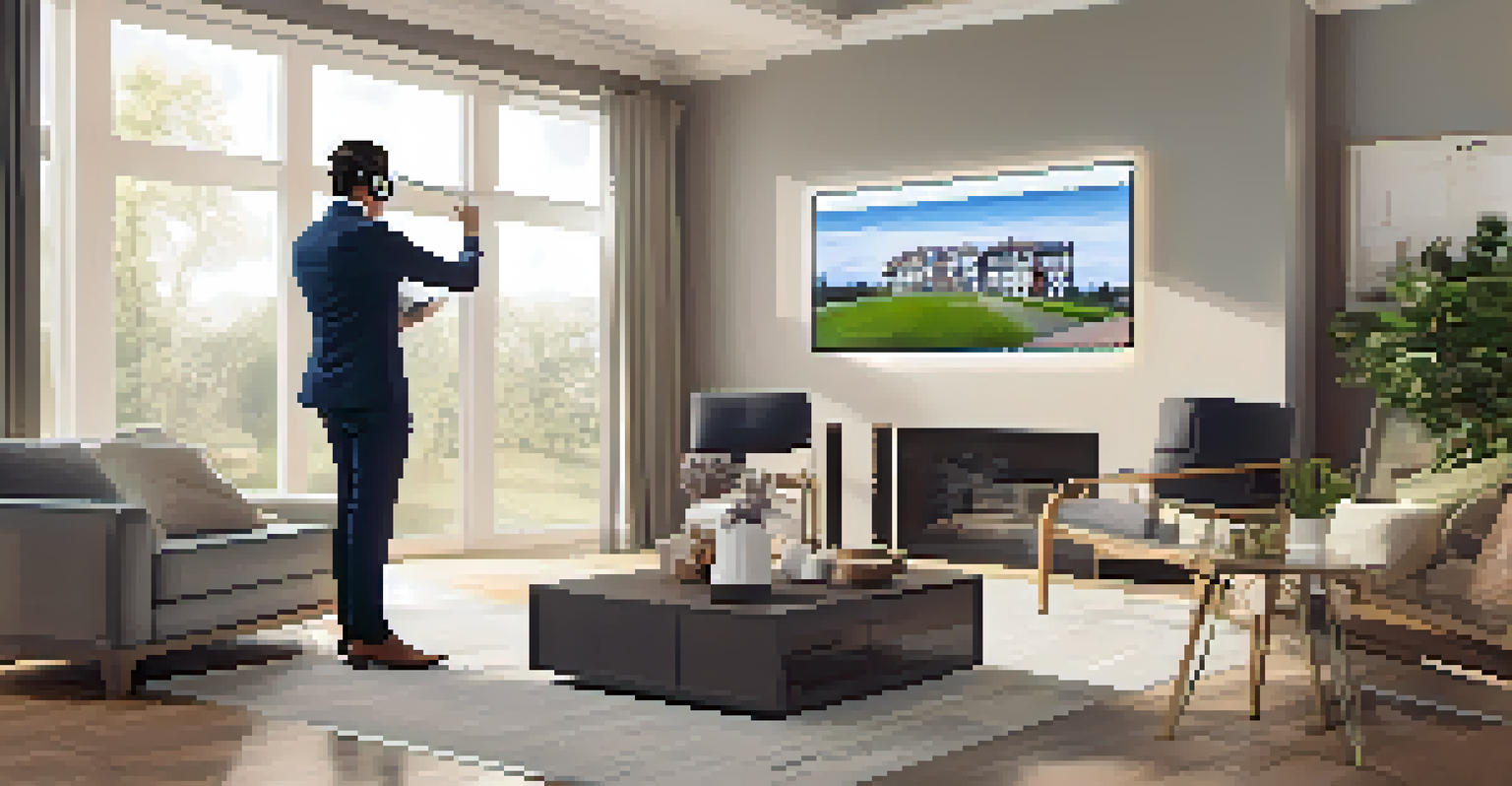AR in Real Estate: Virtual Tours and Enhanced Listings

Understanding Augmented Reality in Real Estate
Augmented Reality (AR) is revolutionizing the real estate industry by merging digital information with the physical world. It allows potential buyers to visualize properties in an immersive way, making the home-buying experience much more engaging. For instance, AR can enable users to see furniture placements in a vacant home or view a renovation in real-time, bridging the gap between imagination and reality.
Augmented Reality is not just a tool; it's a bridge between imagination and reality.
This technology isn’t just a flashy gimmick; it addresses core challenges in real estate marketing. Traditional listings often fall short in providing a true sense of space and layout. AR enhances this by offering interactive experiences that resonate with buyers, making properties more appealing and memorable.
The shift towards AR signifies a broader trend of digitization in real estate. As buyers increasingly lean towards tech-driven solutions, agents and developers are finding that adopting AR tools not only meets client expectations but also gives them a competitive edge in a crowded market.
The Rise of Virtual Tours in Real Estate
Virtual tours are becoming a staple in real estate listings, especially in the wake of the pandemic. They allow potential buyers to explore properties from the comfort of their own homes, making the buying process more convenient and accessible. Imagine walking through a beautiful home, moving from room to room, all without stepping outside your door—this is the power of virtual tours.

These tours can be enhanced with AR features, like interactive elements that provide detailed information about each room or highlight unique architectural features. For example, a user could tap on a wall to learn about the materials used or see the dimensions of the space highlighted in real-time. This level of detail engages buyers and helps them envision themselves in the space.
AR Transforms Real Estate Marketing
Augmented Reality enhances property listings by providing immersive, interactive experiences that engage potential buyers.
Moreover, virtual tours can significantly reduce the time spent on in-person showings. By filtering out properties that don't meet their criteria, buyers can focus on homes that truly resonate with them, making the overall process more efficient for both buyers and agents.
How AR Enhances Property Listings
Incorporating AR into property listings elevates the way information is presented. Instead of static photos, listings can feature 3D models and interactive elements that allow buyers to explore every nook and cranny of a property. This not only captures attention but also enhances understanding of the space, making it easier for buyers to visualize their future homes.
The future of real estate lies in technology that enhances human connections.
For example, a listing could feature a 3D walkthrough where potential buyers can click on different rooms to see detailed descriptions, renovation possibilities, or even view past renovations that have been made. This interactive experience can create a deeper connection between the buyer and the property.
Furthermore, AR can help highlight the unique selling points of a property. Whether it’s a stunning view, a beautiful garden, or smart home technology, these features can be showcased in a way that traditional listings simply can’t match.
The Benefits of AR for Buyers
For buyers, AR offers a host of benefits that simplify the home-buying process. One of the most significant advantages is the ability to visualize spaces without needing to visit them physically. This is especially useful for buyers relocating from other cities or states, allowing them to explore potential homes before making a trip.
Additionally, AR can help buyers make informed decisions by allowing them to experiment with design choices. They can visualize different paint colors or furniture arrangements within the space, which can reduce the stress of purchasing a home that may not fit their style or needs.
Virtual Tours Enhance Buyer Experience
Virtual tours offer convenience and accessibility, allowing buyers to explore properties from home while filtering options effectively.
Moreover, AR can foster a sense of confidence in buyers. By providing a comprehensive view of a property, AR helps potential homeowners feel more secure in their decisions, knowing they have a clear understanding of what they are investing in.
The Advantages of AR for Real Estate Agents
For real estate agents, AR represents a powerful tool that can enhance marketing strategies and improve client engagement. By offering virtual tours and interactive listings, agents can attract a broader audience and provide a more personalized experience. This can lead to a higher conversion rate as buyers feel more connected to the properties.
Furthermore, AR allows agents to stand out in a competitive market. Agents who utilize cutting-edge technology are likely to be perceived as modern and forward-thinking, which can help build trust with potential clients. In a world where first impressions matter, leveraging AR can give agents an edge.
Additionally, the efficiency gained from using AR tools can free up agents' time, allowing them to focus on building relationships and closing deals rather than spending hours on traditional showings.
Challenges and Considerations for AR Implementation
While the benefits of AR in real estate are numerous, there are also challenges to consider. One primary obstacle is the cost of implementing AR technology. For smaller agencies or independent agents, investing in high-quality AR tools can be daunting. However, as technology advances, prices are expected to decrease, making it more accessible.
Another consideration is the learning curve associated with using AR tools. Agents and clients alike may need training to fully utilize these technologies, which can be a barrier to adoption. Ensuring that both parties understand how to navigate AR features is crucial for maximizing its benefits.
AR Benefits Agents and Buyers Alike
Both real estate agents and buyers gain from AR, as it streamlines the buying process and improves client engagement and satisfaction.
Lastly, it’s essential to keep in mind that not all buyers may feel comfortable with technology. While many are eager to embrace AR, others may prefer traditional methods. A balanced approach that combines both AR and conventional marketing strategies can ensure that no potential buyer is left behind.
The Future of AR in Real Estate
As technology continues to evolve, so too will the applications of AR in real estate. We can expect to see even more innovative uses of augmented reality, such as virtual staging where buyers can see how a property could look with different furnishings or styles instantly. This capability can make properties more appealing and reduce the time they spend on the market.
Moreover, advancements in AR could lead to more personalized experiences. Imagine a future where potential buyers can receive tailored property recommendations based on their preferences, all enhanced by AR visuals. This level of customization can transform how buyers interact with listings, making the process more engaging.

In conclusion, the integration of AR in real estate is not just a trend; it's the beginning of a new era. As both buyers and agents embrace this technology, we can anticipate a more interactive, efficient, and enjoyable home-buying experience that caters to the needs of modern consumers.